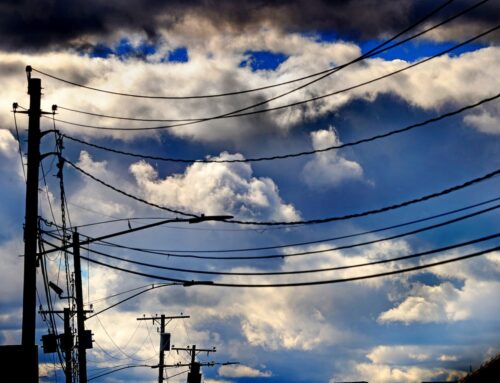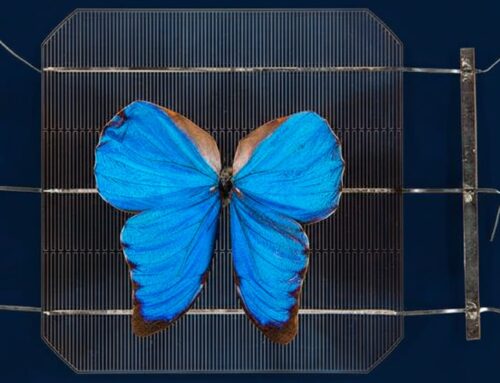Can we recreate a lost world? In Tasmania, anything could happen
March 30, 2025
There is something about Tasmania that makes it a place where people want to restore the past, and not just because Tasmanians still regularly report seeing thylacines bounding off into the forest.
Certainly, it’s a retro kind of place. The landed gentry are still a thing, the powerful families of modern Tasmania tracing their ancestry back to the original squatters, who either took the land by force or bought it from the colonial government, no questions asked. Georgian mansions scatter the rural landscape; in Hobart, convict hewn stone is a building material of choice. Nearly 70% of Tasmanians had both parents born in Australia (the overall figure for the country is 47%), and more than 80% identify with a white ancestry (65% for Australia as a whole). If you ignore the giant cruise ships, the Teslas and the puffer jackets, you could imagine yourself in mid-century Australia.
Or maybe it’s a convenient location for mainland Australians to play out their dreams of environmental redemption. Living amid the sprawling urbanisation of Sydney or Melbourne makes ecological restoration feel impossible (and what would it do to the lifestyle?). But in Tasmania, anything could happen. The thylacine might walk again. Or Lake Pedder might rise from beneath the waters of the Huon–Serpentine Impoundment.
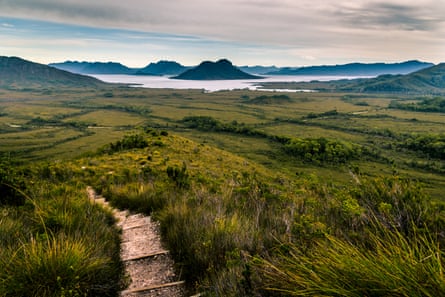
The drowning of Lake Pedder and the fight to stop it features the usual themes of battles over the future of nature in Tasmania. The relationships between corporations and the state government. The disdain of those in power for anyone who cares about non-human species. Jobs (no matter how few, each one worth more than anything nature has to offer). The myth of an “untouched wilderness”. Intervention from the Australian government. Conflicts and collaborations between environmentalists and Tasmanian Aboriginal people. Dramatic, stylised photography. Bob Brown. And now, the hope of restoring something that was lost.
Most of Tasmania’s electricity comes from the kinetic energy generated by damming and releasing water. In 1972, the Huon and Serpentine rivers were dammed by the Hydro-Electric Commission as part of the expansion of the state’s electricity network, designed to double the amount of power available to industries and households. In the process, Lake Pedder and its surrounding ecosystem was submerged under the dam waters. The lake is remembered as a place of pilgrimage for Tasmanian bushwalkers, its pink-quartzite beach unlike any other in the country.
Ever since it was drowned there have been calls to drain the impoundment and give Pedder back its original form. My brain struggles to picture it – a lake that exists under another lake, and that could exist again if the bigger lake was gone. A drowned town I can understand, but drowned water flummoxes my imagination. Still: it’s true. The lake could be restored.
In the United States and Europe, older dams, pricey to maintain and no longer fit for purpose, are frequently demolished, and the rivers they block are restored. In Tasmania, only the Waratah Dam – which created a lake used mainly for recreation – has met this fate, and the local community was deeply opposed to its decommissioning.
Lake Pedder is still doing the job it was built to do: it contributes about 6% of Tasmania’s electricity, as well as firming capacity for renewables, and that would have to be replaced at a time when opposition to windfarms is high. But the dams that flooded the lake are getting old: removing them would be expensive, but maintaining them will be expensive too. Even if the dams are demolished, the Lake Pedder earthworm, made extinct by the impoundment, would not come back (the Pedder galaxias, a fish that was relocated to other water bodies at the time of the flooding, could be reintroduced). There would be significant quantities of algae to deal with, including on the pink-quartz beach, and a very real risk of weed infestation. But it could be done.
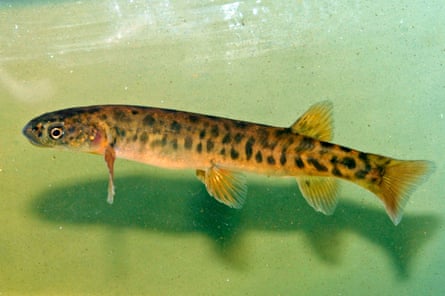
The Restore Lake Pedder campaign, headed by former Australian Greens leader Christine Milne, believes it should be. The difficulty and complexity of the project is, they say, part of what makes it worthwhile – the things we would learn about restoration could make Tasmania a leader in the field. But their argument hinges much less on this than it does on the appeal of going back, of recreating a time before we ruined everything.
What world do we think that reanimated thylacine will return to? I assume, maybe wrongly, that the motivations of the scientists working on this project are like those of so many scientists throughout history: finding out if this impossible thing is possible (and maybe getting famous if it is).
For the rest of us, though, those of us who would love to see the thylacine return, what are we hoping for? Perhaps we want an iconic marsupial we can walk on a lead to our local brunch spot. Or do we picture it somewhere in the heavily altered Tasmanian midlands in a massive caged enclosure, its sheep-farming neighbours writing letters to the Mercury about how it’s all very well reviving the thylacine, but are our animals really safe? Are our children? Or perhaps there will be a purpose-built, ecologically informed zoo in Hobart, maybe at Mona, where we could pay $470 a night to sleep in a luxurious studio whose window overlooks the thylacine den (look in your minibar for the single-serve tiger-themed cocktails in artistic black-glass bottles; complimentary, of course).
More likely we are hoping for something to erase our guilt, not just for the extinction of this animal (we could blame someone else for that) but for all the extinctions to come. More likely we want to feel that the damage we do isn’t permanent, that we can travel back in time.
For now, this project concerns itself only with the scientific possibility of creation, not with what the thylacine’s life will be like outside the lab. But is there any place in future Tasmania for this creature of the past? There is no one for reanimated thylacines to learn from, to teach them what thylacine life is like. (Certainly we are not up to the job: we have no experience in making thylacines happy.) We have restructured the habitat where the tiger lived, decimated its prey, destroyed its culture. We have built a lot of roads: if everything goes very well and thylacines become as common as pademelons, we can look forward to seeing one on our morning commute, smeared across the highway by a logging truck.

The thing we call nature is changing at an incredible rate – the Milky Way lost to light pollution, 85% of species migrating due to climate change, evolution moving at a cracking pace – but for most of us in the business of caring about it, our inclination is to look back: de-extinction, restoration, trying to eradicate introduced species, bringing a drowned lake back from the grave. The future feels overwhelming. It is easy to look back and see the decisions – intentional and otherwise – that brought us to this house with just one door, the door that nobody wants to open. Ask anyone and they’ll tell you where we went wrong: inventing the internet, inventing nuclear weapons, inventing plastic, inventing the internal combustion engine, inventing empires, inventing agriculture, inventing monotheism, inventing cooking with fire; embracing neoliberalism, embracing “the market”, embracing aspiration, embracing globalism, embracing monoculture farming, embracing social media. All of us have a time before, a time when different choices would have led to a different outcome.
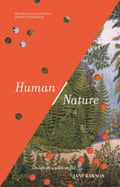
I am not immune to this nostalgia. I long for a 1990s pre-neoliberal Australia, conveniently forgetting how much worse things were then for anyone who wasn’t straight and white. Perhaps we miss a world we felt more fully part of, a world where we could pretend we mattered. Age creeps over us; our sense of irrelevancy grows; everything seems less promising. It is easier to think about recreating a lost world than to imagine a new one, especially when the current one has so little in common with the ideal of nature we hold in our heads.
But instead of pining for the past we might have to turn our focus to building the future – a future in which the scampering, bitey, ever-evolving descendants of today’s Tasmanian devils and eastern quolls (the great-great-great grand-nieces of the thylacine, 72 times removed) can thrive.
-
Human/ Nature: On life in a wild world by Jane Rawson is out in April through NewSouth Books
Search
RECENT PRESS RELEASES
Related Post
